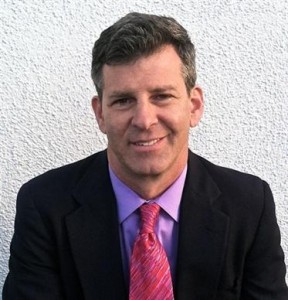Today, October 17, 2014, the Federal Communications Commission (“Commission”) voted to adopt new federal rules that significantly undermine local police powers to regulate wireless infrastructure. The rules will become effective 90 days after the Commission publishes the Report and Order (“Order”) in the Federal Register.
Although as of this writing the Commission has not yet released its Order to the pubic, each Commissioner previewed portions of the Order in their comments before the vote.
State and local governments can expect new special exceptions and exclusions from environmental and historic preservation reviews for DAS and small cells, even when the project involves a diesel generator or hydrogen fuel cells.
Section 6409(a)
Perhaps the most dramatic changes will deal with Section 6409(a) of the Middle Class Tax Relief and Job Creation Act of 2012 (“Section 6409(a)” which is codified at 47 U.S.C. § 1455(a)) and the Commission’s time limits on local wireless site application reviews (colloquially known as the “Shot Clock”) for projects that qualify for treatment under Section 6409(a).
Section 6409(a) mandates that State and local governments “may not deny, and shall approve” an “eligible facilities request” so long as that eligible facilities request does not “substantially change the physical dimensions of the existing wireless tower or base station.” The Commissioners explained that the Order would define ambiguous statutory terms, impose a 60-day deadline for State and local governments to act on a collocation application, and inflict a “deemed granted” remedy for failures to act before the deadline.
Commissioner Ajit Pai emphasized that, under the rules adopted today, an applicant can begin construction on day 61 after the State or local government fails to act on day 60. Whether this preempts building permit requirements is unclear, and could lead to serious public safety hazards from tower/facility construction like the ones that caused the 2007 Malibu Canyon fire.
One big question the Order will answer is how the Commission defined a “substantial change in the physical dimensions of a wireless tower or base station.” This issue is crucial because Section 6409(a)—and the truncated time for review under a deemed-granted threat—applies only when the applicant submits a request to collocate or modify a site that does not result in a substantial change. None of the Commissioners offered specifics, but the Commission hinted that it leaned towards a one-size-fits-all approach.
The FCC Shot Clock
The Commission also indicated that the Order will revise its Shot Clock rules. Prior to today’s Order, local governments had to review and grant or deny applications for new sites within 150 days or 90 days for collocations. Now, for at least collocations, the Shot Clock is reduced to 60 days. The Order will likely extend the Shot Clock to DAS and small cells.
The Commissioner’s hinted that the Order would preempt or sharply local moratoria.
One potential bright spot came from Commissioner Pai, who suggested that the “deemed granted” remedy imposed under Section 6409(a) does not extend to Shot Clock violations for new sites or eligible facilities requests that cause a substantial change. However, Commissioner Pai hopes the Commission will revisit that issue within 18 to 24 months.
So What Now?
In the near-term, the administrative process at the Commission is not yet finished. Municipalities and other interested parties can file a “Petition to Reconsider,” which asks for specific changes to a published order. Petitions must be received within 30 days after the Commission publishes a public notice of the Order (expected in the Federal Register). Such petitions do not necessarily stop the rules from becoming effective or during the time the Commission considers the petition.
Court Challenges to the Order
It seems very likely that the Order will be challenged in federal court. State and local governments will likely argue that the Constitution and settled case law prohibit the federal government from enacting a statute that forces State and local governments to administer a federal program. Lawyers will likely argue that Section 6409(a) unconstitutionally forces municipalities to administer a federal wireless infrastructure deployment program because it requires them to process applications under federal standards within a federal timeline or face federal penalties. Further, Section 6409(a), now presumably exacerbated by the rules in the Order, isolate the federal government from the political accountability of the law and rules, shifting that accountability to the states and local governments that have no option but to administer the program. Any such challenge might not occur for many months, and the machinery of the judicial system turns slowly.
New Local Wireless Ordinances
In the meantime, the wireless industry seems intent on rewriting local ordinances, too. For example, Commissioner Mignon Clyburn commended CTIA and PCIA (lobbyists for the wireless industry) for their offer to teach local governments “best practices” and to provide “model ordinances and applications” for streamlined application reviews. If this sounds like the fox guarding the hen house, it is. Local governments should look to advocates unaligned with the industry to be regulated for help rewriting their local laws and ordinances to comply with the Order.
Blame the Local Governments?
Commissioner Michael O’Rielly said that the new rules will streamline wireless deployment because “the gig is up” for recalcitrant municipalities. Unfortunately for all involved, one more likely result is that wireless ordinances and review processes will become more detailed, more rigorous, and more contentious. More to the point, however, is that the public will likely be far from happy with Congress Members who have passed a law that makes their local community officials mere functionaries forced to carry out this federal government program at the expense of local community aesthetics and interests.
We will offer commentary on the specifics in the Order once the Commission makes the Order available to the public.
Telecom Law Firm, P.C.
